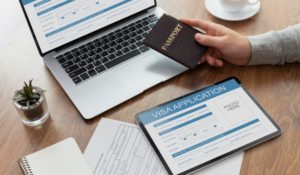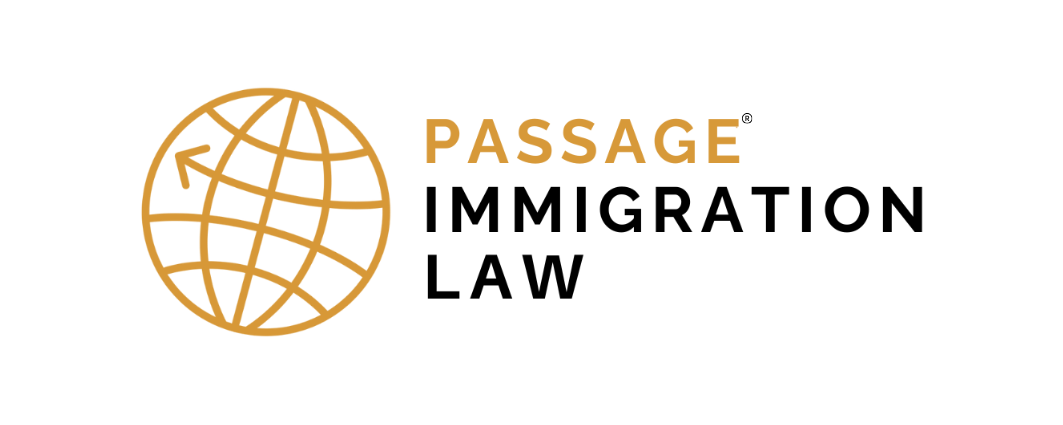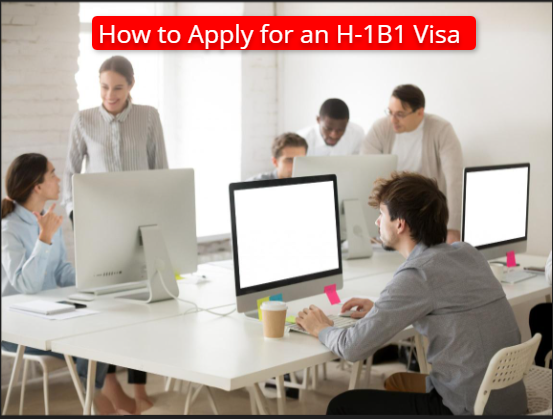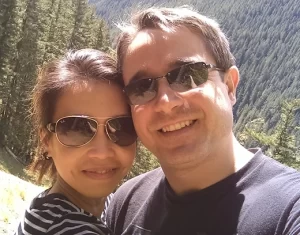Under free trade agreements, professionals from Chile and Singapore can work in the United States using a special non-immigrant H-1B1 visa. This visa offers a simplified procedure for qualified workers to secure jobs in specialized fields and is a part of U.S. efforts to strengthen economic relations with these nations. The H-1B1 visa requirements, the procedure, tips for a successful application, and what to do once you get this visa are covered in this thorough guide.
What is an H-1B1 Visa?
Qualified professionals from Chile and Singapore may temporarily work in the United States in specialized fields under the H-1B1 visa. Specialty jobs require a bachelor’s degree or higher, typically in occupations like IT, engineering, science, healthcare, or business.
This visa is specific, unlike the other regular H-1B visa, which any individual from any country can get. The H-1B1 visa is governed by unique restrictions and eligibility criteria specific to the trade agreements with Chile and Singapore.
Key Features of the H-1B1 Visa:
- Eligibility: Open only to Singaporean and Chilean citizens.
- Validity: The H-1B1 visa period is one year, renewable in one-year intervals.
- Quota: Annually, 1,400 visas are allocated to Chile and 5,400 to Singapore.
- Non-Dual Intent: Unlike the H-1B visa, the H-1B1 visa requires applicants to show they intend to return to their native country once their job period ends.
Differences Between H-1B and H-1B1 Visas
If you’re considering your options, it’s essential to understand the H-1B vs H-1B1 differences.
| Point of Interest | H-1B | H-1B1 |
| Eligibility | Open to every nationality. | Exclusively for residents of Chile and Singapore. |
| Quota | 65,000 yearly plus 20,000 for advanced degrees. | Chile has 1,400; Singapore has 5,400. |
| Validity | Initial three years, extendable to six. | One year, yearly renewable. |
| Dual Intent | Yes. | No. |
| Route to the Green Card | Straightforward. | Possible but complicated given non-dual intent. |
Step-by-Step Guide to Apply for an H-1B1 Visa
Step 1: Secure a Job Offer

Getting a job offer from a U.S. company comes first and most importantly. The job has to be a specialty vocation, requiring advanced expertise and a bachelor’s degree in a related field.
Step 2: Ensure You Meet Eligibility Requirements
The H-1B1 visa requirements include:
- Citizenship: You have to be a Singaporean or Chilean citizen.
- Specialty Occupation: The job must require a bachelor’s degree or higher.
- Educational Qualifications: Your degree has to fit the requirements of the job.
- Evidence of Non-Immigrant Intent: Show your plan to return by demonstrating ties to your native country, such as family relations or property ownership.
Step 3: Employer Files a Labor Condition Application (LCA)
Your company has to file an LCA with the U.S. Department of Labor. The LCA guarantees:
- The paid salary satisfies accepted industry standards.
- Hiring you will not negatively impact American workers.
Step 4: Gather Necessary Documentation
Get ready for the following records:
- A valid passport
- A detailed employment offer letter from your company
- A copy of the approved LCA
- Academic degrees and transcripts
- Proof of professional qualifications including licenses, certificates
- Document proving your intention to return to Singapore or Chile
Step 5: Submit Your Visa Application
Unlike the H-1B visa, the H-1B1 visa does not call for prior clearance from U.S. Citizenship and Immigration Services (USCIS). Applying directly from your native country at the U.S. embassy or consulate involves the following steps:
- Online completion of the DS-160 form will generate a printed confirmation page.
- Pay the visa application fee.
- Visit your local U.S. consulate or embassy to arrange an interview.
Step 6: Attend Your Visa Interview

The consular officer will analyze your application and investigate your work, qualifications, and intention to return home after employment during your interview. Get ready to clarify what is an H-1B1 visa and provide the necessary paperwork.
Step 7: Wait for Visa Approval
If approved, your visa will be stamped in your passport, allowing you to go to the United States and start working.
Extending Your H-1B1 Visa
If your employment continues for more than one year, you will have to request an extension. How to extend H-1B1 here:
- Have your company file a new LCA.
- Submit a new application at the U.S. consulate or embassy.
- Provide proof of continuing eligibility and work.
The H-1B1 extension period, usually granted in one-year increments, has no specified maximum limit as long as eligibility standards are satisfied.
Pathway to Green Card: Strategic Planning for Permanent Residency
Though the visa’s non-dual intent makes switching from an H-1B1 visa to a green card more difficult, it is possible with sufficient preparation. Here are some pathways to consider:
Employment-Based Green Card
Employment-based immigration allows your company to sponsor you for a green card. Usually, this consists of:
- Filing a PERM Labor Certification.
- Submitting an I-140 petition.
- Adjusting status through Form I-485 if you stay in the United States.
Family-Sponsored Green Card

Your green card application may be sponsored by immediate family members who are either U.S. citizens or permanent residents.
Dual Intent Adjustment
Although the H-1B1 visa does not specifically permit dual intent, first switching to an H-1B visa can help to simplify this process.
Career Growth and Opportunities on an H-1B1 Visa
Working on an H-1B1 visa allows you to take steps to further your professional and personal goals:
Upskilling and Certifications
Consider getting certifications, licenses, or skills relevant to your field to improve your job opportunities. This not only adds value to your resume but also enhances your case for possible green card sponsorship.
Networking and Professional Development
Networking in your field of work can result in new opportunities and relationships that may be advantageous for your career. To improve your professional network, attend industry conferences, join associations, and participate in local activities.
Transitioning to Other Visa Categories
If you intend to stay in the United States longer than the H-1B1 visa allows, consider switching to another visa category:
H-1B Visa
Changing to an H-1B visa offers more freedom, including a longer validity period and dual intent (the option to pursue permanent residency). To simplify this process, consult your employer and an immigration lawyer.
Other Employment-Based Visas
Your qualifications and job position will determine if you qualify for other employment-based visas, like the O-1 visa for those with extraordinary ability or the L-1 visa for intra-company transferees.
Understanding Recent Changes: H-1B1 Visa New Rules
The U.S. immigration landscape is constantly evolving, with changes to policies, fees, and processing times. Keep informed on:
- H-1B1 annual quota adjustments
- Updated visa processing and renewal fees
- Updated documentation needs or eligibility criteria
Common Challenges and Solutions for H-1B1 Visa Holders
-
Limited Validity and Frequent Renewals
Professionals seeking stability could find the one-year validity of the H-1B1 visa difficult. To handle this:
- Plan renewal applications in advance.
- For longer-term possibilities, consider moving to an H-1B visa or another visa type.
-
Non-Dual Intent Restriction
If your long-term goal is permanent residence, work with your employer and an immigration counsel to create a plan fit for your visa conditions.
-
Employer-Specific Limitations
Changing jobs calls for a new application as the visa is linked to your sponsoring company. Before switching, make sure any new employment offer meets H-1B1 criteria.
Final Tips for Success on an H-1B1 Visa

- Stay Informed: For the most recent updates on visa policies, regularly visit U.S. government websites or consult with immigration experts.
- Maintain Compliance: Always follow the terms of your visa to keep compliance and prevent USCIS issues.
- Plan Ahead: Early preparation can make all the difference, whether renewing your visa, changing employment, or moving to a green card.
- Seek Professional Guidance: Navigating U.S. immigration laws can be challenging. Legal professionals can offer specific guidance and help.
In Summary
For professionals from Chile and Singapore, this visa offers a simplified path to employment in the United States. Understanding the process, H-1B1 visa sponsorship criteria and alternatives for extension or transition to permanent residency helps you to maximize this opportunity.
Contact Passage Immigration Law for Professional Help
With your H-1B1 visa application, our qualified staff is here to help you at every stage. Visit Passage Law to get started right now!







